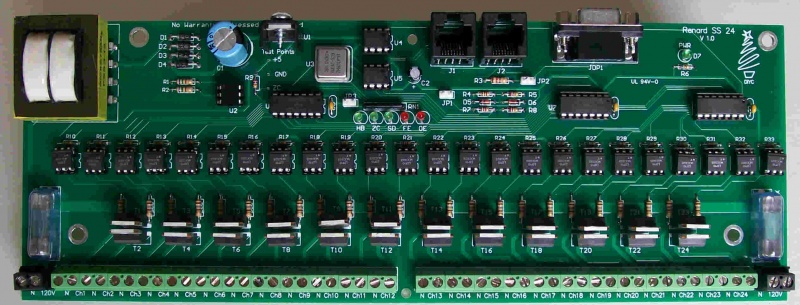Renard 64XC Construction: Difference between revisions
No edit summary |
No edit summary |
||
| Line 1: | Line 1: | ||
==Board Assembly== | |||
:The following sequence of steps is by no means the only way to Assembly the Renard 64. It is simply a suggested order of assembly. Many will have varied opinions on what the order should be. | |||
:'''NOTE:''' The part numbers referenced in the following instructions are those taken from the [[REN64Construction#Parts Listing (BOM) | Renard 64 BOM]]. | |||
{| border="0" cellpadding="10" style="text-align: left;" | |||
!width="300"| | |||
!width="200"| | |||
|- | |||
| | |||
* Start by checking the PCB over for any obvious production faults. Check for traces that end abruptly or have cracks/breaks in them. Also check that all holes are clear. Also, look for damage that may have occured during shipping and handling. Large scratches over traces can be an issue. | |||
<!-- || [[Image:Wiki - Renard SS24 PCB.jpg | 200px]] needs to be updated for the REN64 --> | |||
|- | |||
| | |||
* Install two 750 ohm resistors R1 & R2. Make sure that the resistors have a value of 750 ohms [violet/green/brown/gold stripes]. These resistors have no polarity to worry about. | |||
<!--|| [[Image:Wiki - Renard SS24 Assembly Step03.jpg | 200px]]--> | |||
|- | |||
| | |||
* Install the 120 ohm resistor R3. Make sure that the resistor has a value of 120 ohms (brown/red/brown/gold stripes). This resistor have no polarity to worry about. | |||
<!--|| [[Image:Wiki - Renard SS24 Assembly Step04.jpg | 200px]]--> | |||
|- | |||
| | |||
* Install the 120 ohm resistor R3. Make sure that the resistor has a value of 120 ohms (brown/red/brown/gold stripes). This resistor have no polarity to worry about. | |||
<!--|| [[Image:Wiki - Renard SS24 Assembly Step04.jpg | 200px]]--> | |||
|- | |||
| | |||
* Install two (2) 1K ohm resistors R4 and R7. Make sure that the resistors have a value of 1K ohm [brown/black/red/gold stripes]. | |||
<!--|| [[Image:Wiki - Renard SS24 Assembly Step05.jpg | 200px]]--> | |||
|- | |||
| | |||
* Install three (3) 27K ohm resistors R5, R8, and R9. Make sure that the resistors have a value of 27K ohms [red/violet/orange/gold stripes]. | |||
<!--|| [[Image:Wiki - Renard SS24 Assembly Step06.jpg | 200px]]--> | |||
|- | |||
| | |||
* Install twenty five (25) 680 ohm resistors R6, R10 thru R33. Make sure that the resistors have a value of 680 ohms [blue/grey/brown/gold]. | |||
<!--|| [[Image:Wiki - Renard SS24 Assembly Step09.jpg | 200px]]--> | |||
|- | |||
| | |||
* Install twenty four (24) 180 ohm resistors R34 thru R57. Make sure that the resistors have a value of 180 ohms [brown/grey/brown/gold]. | |||
<!--|| [[Image:Wiki - Renard SS24 Assembly Step10.jpg | 200px]]--> | |||
|- | |||
| | |||
* Install four diodes D1 thru D4. The diodes will have a silver/grey stripe on a black body. Make sure that this stripe lines up with the stripe on the PCB silk screen (to the left). | |||
<!--|| [[Image:Wiki - Renard SS24 Assembly Step02.jpg | 200px]]--> | |||
|- | |||
| | |||
* Install zener diode D5. The diode must be installed correctly. The diode should have a black stripe on the orange/red body. Make sure that this stripe lines up with the stripe on the PCB silkscreen. | |||
<!--|| [[Image:Wiki - Renard SS24 Assembly Step07.jpg | 200px]]--> | |||
|- | |||
| | |||
* Install zener diode D6. The diode must be installed correctly. The diode should have a black stripe on the orange/red body. Make sure that this stripe lines up with the stripe on the PCB silkscreen. | |||
<!--|| [[Image:Wiki - Renard SS24 Assembly Step08.jpg | 200px]]--> | |||
|- | |||
| | |||
* Install three (3) 0.1uF capacitors C3, C4 and C5. These capacitors are not polarized so the orientation is not critical. | |||
<!--|| [[Image:Wiki - Renard SS24 Assembly Step11.jpg | 200px]]--> | |||
|- | |||
|<center>'''INSTALLATION NOTE:''' </center> | |||
<blockquote>The following resistor network is a "bussed" type resistor network. This means that the seven (7) resistor components (pins 2-8) are all connected in a common buss to pin 1. Installing the resistor network backwards will cause a multitude of malfunctions. So please take the time to make sure they are installed correctly.</blockquote> | |||
|- | |||
| | |||
* Install the eight (8) 330 ohm resistor networks RN1-RNX. The resistor network should have a dot on it to indicate pin 1. Insert pin 1 of the resistor network into the square solder pad. | |||
<!--|| [[Image:Wiki - Renard SS24 Assembly Step12.jpg | 200px]]--> | |||
|- | |||
| | |||
* Install four green LEDs PWR (D7), HB, ZC & SD (PN# 604-WP7104GT). The LEDs are polarized and must be installed correctly. The short lead is the cathode and must be placed in the square solder pad. | |||
* Install two red LEDs FE & OE (PN# 604-WP7104IT). The LEDs are polarized and must be installed correctly. The short lead is the cathode and must be placed in the square solder pad. | |||
|| [[Image:Wiki - Renard SS24 Assembly Step13.jpg | 200px]] | |||
|- | |||
| | |||
* Install three 2-pin vertical headers JP1, JP2 & JP3 (PN# 538-22-03-2021). These headers have no polarity to worry about. | |||
|| [[Image:Wiki - Renard SS24 Assembly Step14.jpg | 200px]] | |||
|- | |||
| | |||
* Install the clock oscillator U3 (PN# 520-TCH1843-X). The oscillator must be installed in the correct orientation. The oscillator has three rounded corners and one squared corner, make sure that the squared corner is positioned to match the PCB silkscreen (upper left corner). | |||
|| [[Image:Wiki - Renard SS24 Assembly Step15.jpg | 200px]] | |||
|- | |||
| | |||
* Install the voltage regulator U1 (PN# 511-LF50CV). The voltage regulator must be installed correctly. The voltage regulators tab/heat sink must be aligned with wider line of the PCB silkscreen outline (facing towards the PCB top edge). | |||
|| [[Image:Wiki - Renard SS24 Assembly Step16.jpg | 200px]] | |||
|- | |||
| | |||
* Install the 2200uF capacitor C1 (PN# 140-XRL16V2200-RC). This capacitor is polarized and must be installed correctly. The capacitor should have a black stripe on the body to indicate which lead is negative. The positive lead of the capacitor will be the longer lead. Make sure that the positive lead is placed in the square solder pad. | |||
|| [[Image:Wiki - Renard SS24 Assembly Step17.jpg | 200px]] | |||
|- | |||
| | |||
* Install the 47uF capacitor C2 (PN# 667-ECA-1CM470). This capacitor is polarized and must be installed correctly. The capacitor should have a silver/grey stripe on the body to indicate which lead is negative. The positive lead of the capacitor will be the longer lead. Make sure that the positive lead is placed in the square solder pad. | |||
|| [[Image:Wiki - Renard SS24 Assembly Step18.jpg | 200px]] | |||
|- | |||
| | |||
* Install four fuse clips (PN# 534-3517) '''Note: they are directional for proper fit of the fuse.''' A helpful installation tip here would be to put a fuse in the clips when you position them in their mounting holes. This will help keep them correctly aligned so that the fuse will fit properly. | |||
|| [[Image:Wiki - Renard SS24 Assembly Step19.jpg | 200px]] | |||
|- | |||
|<center>'''INSTALLATION NOTE:''' </center> | |||
<blockquote>Pin 1 of the following IC sockets must be aligned with the square solder pad. Another way to verify that you installed them correctly is to make sure that the notch on the socket is aligned with the notch on the PCB silkscreen outline. </blockquote> | |||
|- | |||
| | |||
* Install two 8-pin IC sockets for U4 & U5 (PN# 571-1-390261-2). | |||
|| [[Image:Wiki - Renard SS24 Assembly Step20.jpg | 200px]] | |||
|- | |||
| | |||
* Install three 14-pin IC sockets for U6, U7 & U8 (PN# 571-1-390261-3). | |||
|| [[Image:Wiki - Renard SS24 Assembly Step21.jpg | 200px]] | |||
|- | |||
| | |||
* Install 25 6-pin IC sockets for U2, M1 thru M24 (PN# 571-1-390261-1). | |||
|| [[Image:Wiki - Renard SS24 Assembly Step22.jpg | 200px]] | |||
|- | |||
| | |||
* Install 24 triacs T1 thru T24 (PN# 511-BTA04-700T). The triacs must be installed correctly. The triac tab/heat sink must be aligned with wider line of the PCB silkscreen outline. The tab/heat sink of the odd numbered triacs will facing the even numbered triacs and vice versa. | |||
|| [[Image:Wiki - Renard SS24 Assembly Step23.jpg | 200px]] | |||
|- | |||
| | |||
* Install 24 terminal blocks for Ch1 thru Ch24 (PN# 571-2828372). These terminal blocks have a small interlocking tab that allows the terminals to be "stacked" together to create a larger terminal block. It is easier to go ahead and "stack" twelve terminal blocks together first and then mount them on the PCB. | |||
|| [[Image:Wiki - Renard SS24 Assembly Step24A.jpg | 200px]] | |||
[[Image:Wiki - Renard SS24 Assembly Step24.jpg | 200px]] | |||
|- | |||
| | |||
* Install two terminal blocks for 120V input (PN# 571-7969492). | |||
|| [[Image:Wiki - Renard SS24 Assembly Step25.jpg | 200px]] | |||
|- | |||
| | |||
* Install the transformer TF1 (PN# 838-3FS-312). | |||
|| [[Image:Wiki - Renard SS24 Assembly Step26.jpg | 200px]] | |||
|- | |||
| | |||
* Install two RJ45 modular jacks J1 & J2 (PN# 571-5556416-1). Due to minor variations in manufacturing, some RJ45 jacks are a tighter fit than others. Care should be taken to ensure that the pins are aligned first before applying too much pressure to seat the locking lugs through the board. | |||
|| [[Image:Wiki - Renard SS24 Assembly Step27.jpg | 200px]] | |||
|- | |||
| | |||
* Install the DE9 connector JDP1 (PN# 152-3409). | |||
|| [[Image:Wiki - Renard SS24 Assembly Step28.jpg | 200px]] | |||
|- | |||
|colspan="2" |<blockquote> If you are unsure about your ability to build this board, then you should go to [[Beginners Setup Guide The Renard SS24 | The Beginner's Setup Guide]] at this point. [[Beginners Setup Guide The Renard SS24 | The Beginner's Setup Guide]] will walk you thru some initial tests to make sure that everything is working correctly before inserting the IC chips. </blockquote> | |||
|- | |||
|<center>'''INSTALLATION NOTE:''' </center> | |||
<blockquote>Pin 1 of each IC must be aligned with pin 1 of the corresponding socket. This can be verified by noting that the notch on the IC is aligned with the notch on the socket. | |||
|- | |||
| | |||
* Install the H11AA1 optocoupler U2 (PN# 782-H11AA1). | |||
|| [[Image:Wiki - Renard SS24 Assembly Step29.jpg | 200px]] | |||
|- | |||
| | |||
* Install three PIC microcontrollers U6, U7 & U8 (PN# 579-PIC16F688-I/P). The PICs need to be programmed with the appropriate firmware before installation. More info on programming PICs can be found [http://www.doityourselfchristmas.com/forums/showpost.php?p=3346&postcount=1 here.] | |||
|| [[Image:Wiki - Renard SS24 Assembly Step30.jpg | 200px]] | |||
|- | |||
| | |||
* Install two RS232/RS485 Interface ICs U4 & U5 (PN# 511-ST485BN). | |||
|| [[Image:Wiki - Renard SS24 Assembly Step31.jpg | 200px]] | |||
|- | |||
| | |||
* Install 24 optoisolators M1 thru M24 (PN# 859-MOC3023). | |||
|| [[Image:Wiki - Renard SS24 Assembly Step32.jpg | 200px]] | |||
|- | |||
| | |||
* Install the heat sink (PN# 532-577102B00) on voltage regulator U1. The mounting hardware and heat transfer compound are not included in the BOM since any common hardware can be used to attach the heat sink. If you don't have any heat transfer compound handy, you can use PN# 532-249. In the picture the heat sink is attached using a #8 x 3/8" metal screw found at home depot. | |||
|| [[Image:Wiki - Renard SS24 Assembly Step33.jpg | 200px]] | |||
|- | |||
| | |||
* Install two fuses (PN# 504-GMA-10) and two fuse covers (PN# 534-3527C). | |||
|| [[Image:Wiki - Renard SS24 Assembly Step34.jpg | 200px]] | |||
|} | |||
<center>'''Completed Renard 64XC'''</center> | |||
[[Image:Wiki - Renard SS24 Completed Board.jpg | 800px]] | |||
<center>'''Congratulations! You have finished building your Renard 64!'''</center> | |||
Revision as of 05:51, 13 August 2010
Board Assembly
- The following sequence of steps is by no means the only way to Assembly the Renard 64. It is simply a suggested order of assembly. Many will have varied opinions on what the order should be.
- NOTE: The part numbers referenced in the following instructions are those taken from the Renard 64 BOM.
| |
| |
| |
| |
| |
| |
| |
| |
| |
| |
| |
| |
| |
| |
|
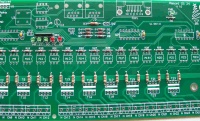
|
|
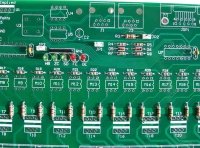
|
|
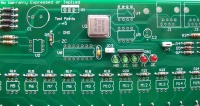
|
|
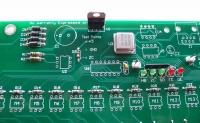
|
|
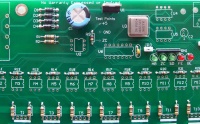
|
|
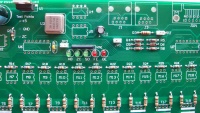
|
|

|
| |
|
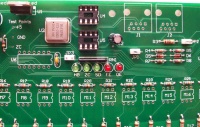
|
|
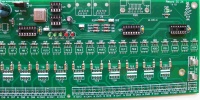
|
|

|
|

|
|
|
|

|
|
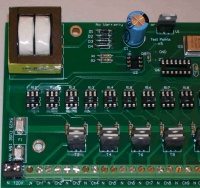
|
|
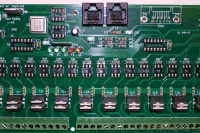
|
|
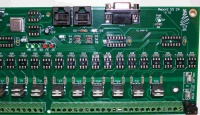
|
| |
| |
|
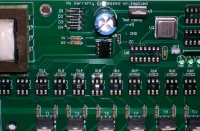
|
|

|
|
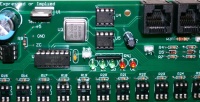
|
|

|
|
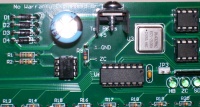
|
|
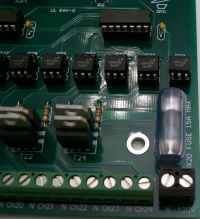
|

